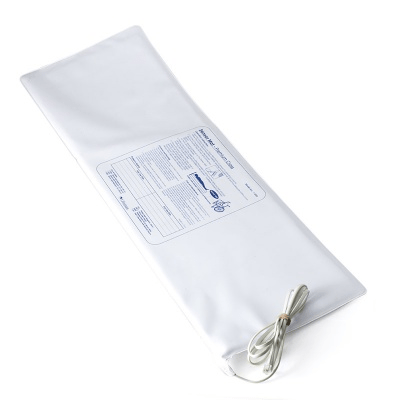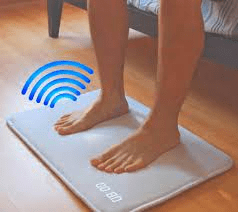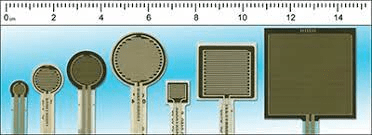We live in an era of technological advancement, where innovations continually reshape our daily lives. Among these developments, sensor mats for the elderly stand out as a testament to how technology can directly impact the well-being of our senior population. These mats, designed to detect and alert caregivers of movements or lack thereof, have become essential tools in ensuring the safety and promoting independence among the elderly. Here’s why.
What Are Sensor Mats?
Sensor mats are pressure-sensitive devices designed to detect weight. They can be placed under a mattress, by the side of a bed, a chair or on the floor beside it. When pressure is applied or removed – say, when someone gets up from a bed or steps on it – the mat sends an alert, usually to a paired device or a central monitoring system.
Why are They Essential for the Elderly?
1. Fall Prevention
The risk of falling is one of the most significant concerns for the elderly. A simple trip can lead to severe injuries from falls, long-term complications, or even fatalities. Sensor mats can be instrumental in preventing such incidents.
By placing these mats on the floor, they can alert caregivers the moment an elderly person starts to get up – allowing for timely assistance if needed. For example, those seniors who have a pattern of night-time wandering, these mats can give caregivers a heads up before a potential fall happens.
2. Immediate Response to Accidents
Accidents can happen, even with the best preventive measures. In case of a fall, the rapid response can make a significant difference in patient outcomes. Since sensor mats can detect when someone is on the ground and not getting up, they can alert caregivers or medical professionals immediately, ensuring that the person receives prompt attention.
3. Monitoring Health
In addition to safety, these mats can also offer insights into an elderly person’s health. Some advanced sensor mats can monitor heart rate, respiration, and even sleep patterns. By the sensor mat and keeping track of these vitals, caregivers or family members can notice any anomalies that may suggest a health issue.
4. Promoting Independence
For many seniors, the idea of retaining their independence is crucial. They want to carry out their daily routines without feeling watched constantly. Sensor mats offer a non-intrusive way to keep an eye out for their safety, allowing them room to live their lives while still ensuring they’re okay.
Choosing the Right Sensor Mat
Not all sensor mats are created equal. When choosing one for an elderly loved one, consider the following:
- Sensitivity: Some mats can be adjusted for sensitivity. This feature is vital, especially if the mat is used in bed, to prevent false alarms when the person is merely turning in their sleep.
- Connectivity: How does the mat alert caregivers? Some connect to central systems, some to handheld devices, and others might even dial emergency numbers directly. Choose one that fits your setup best.
- Durability: It should be robust and water-resistant, especially if you’re placing it on the bathroom floor or other wet areas.
- Additional Features: As mentioned, some mats can monitor vitals or sleep patterns. If these features align with your needs, consider investing in a more advanced mat.
Alarm Mat
Alarm mats, commonly known as sensor or pressure mats, are devices designed to detect weight and pressure changes. When someone steps on or applies pressure to these mats, they trigger an alarm or send a signal to a monitoring device, receiver or system. Over the years, their application has become increasingly popular in various settings, especially in the care of the elderly and in security systems.
Applications of Alarm Mats
1. Elderly Care: As mentioned, one of the primary uses of alarm mats is in the care of the elderly. They can be placed next to a bed or in strategic locations around the home. If an elderly person tries to get up from their bed at night or wanders around, the mat will detect the movement and alert caregivers or family members. This is particularly beneficial for those with dementia or those at risk of falling.
2. Security: Alarm mats can be placed at entrances or specific areas where unauthorized access is a concern. If someone steps on the mat, an alarm sounds, alerting security or property owners of a potential intrusion.
3. Retail: In some retail settings, alarm mats are placed near displays or high-value stock items. If a customer or staff member steps onto the mat, it can trigger a light or sound to draw attention to that area.
4. Health Monitoring: Some advanced alarm mats come equipped with additional features that can monitor a person’s vital signs, breathing patterns, or movements during sleep.
Benefits of Alarm Mats
1. Non-Intrusive: Unlike cameras or other monitoring devices, alarm mats are discreet and non-invasive.
2. Versatile: They can be used in various settings, from homes and hospitals to retail stores and security checkpoints.
3. Easy to Install: Most alarm mats are straightforward to set up and don’t require complicated installation procedures.
4. Immediate Alerts: They provide instant notifications, ensuring rapid response to any situation, whether it’s attending to an elderly family member or addressing a security concern.
What are Sensor Pad?
Sensor pads are devices equipped with pressure-sensitive sensors. These pads detect changes in pressure or weight, and when a particular threshold is met or changed, the sensor pad can send a signal or trigger an alarm. At a fundamental level, these bed sensor pads are about detection – whether it’s detecting the presence of someone in bed, someone stepping onto a mat, or any other applications.
Conclusion
Technology continues to pave the way for safer, more comfortable living for people of all ages. Sensor mats for the elderly are just one of the myriad innovations that aim to improve the quality of life for our senior population. By understanding the benefits they offer and how to choose and purchase the right one, we can ensure our loved ones’ safety without compromising their independence.


